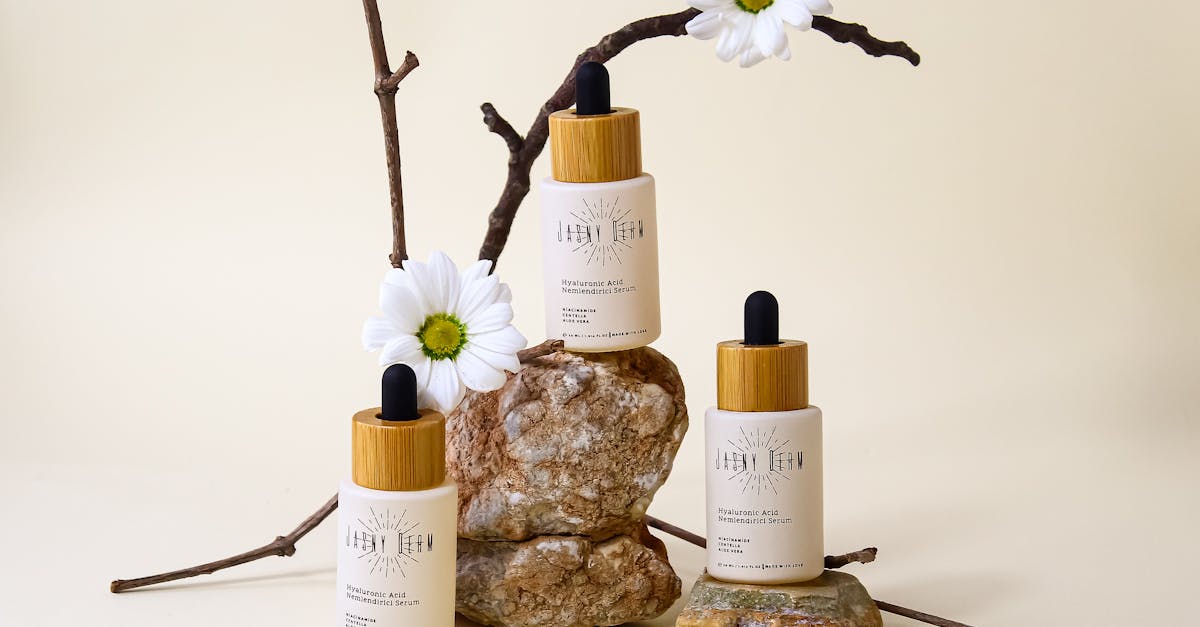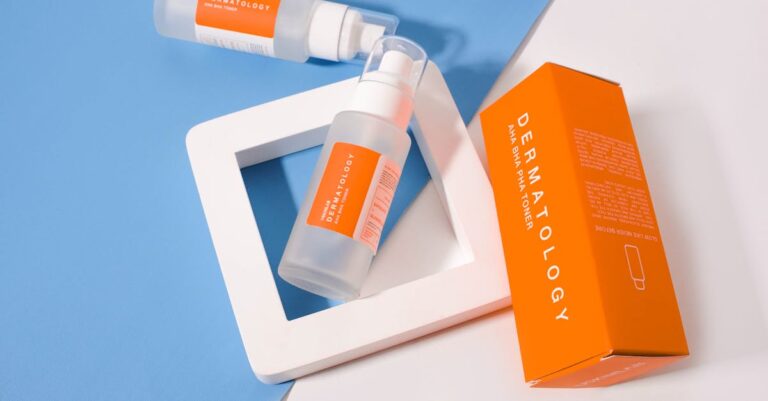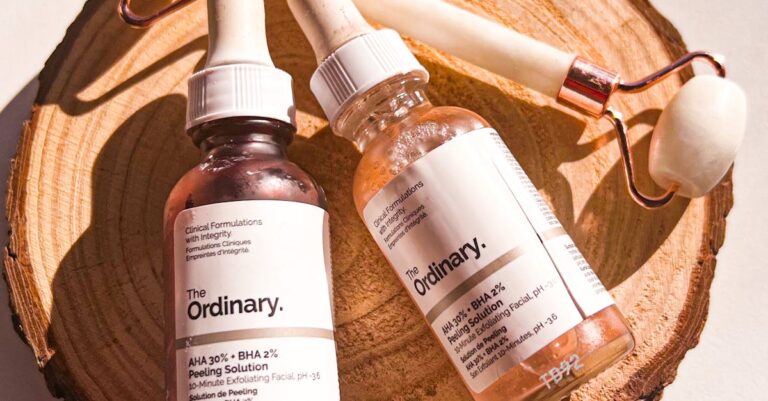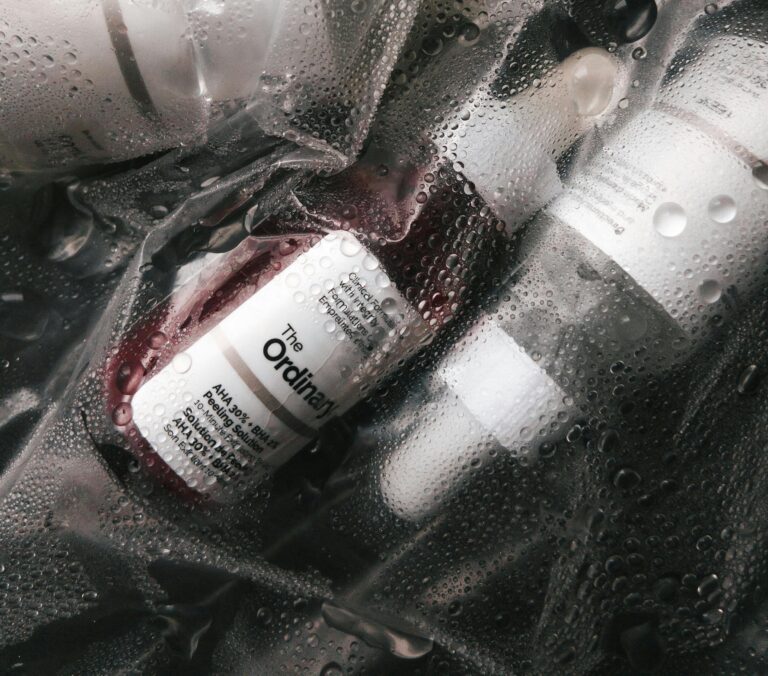Hyaluronic acid—often shortened to HA—is one of skincare’s most talked-about ingredients, and for good reason. It’s a naturally occurring molecule found throughout the human body, especially in the skin, connective tissues, and eyes. Despite having the word “acid” in its name, hyaluronic acid is anything but harsh; in fact, it’s known for being incredibly gentle and hydrating.
Chemically, HA is a glycosaminoglycan—a type of sugar molecule that binds to water, helping to retain moisture in the skin. In fact, just one gram of hyaluronic acid can hold up to one liter (1000 mL) of water—a property that makes it indispensable in maintaining skin hydration.
As we age, the body’s natural production of HA declines, which contributes to dryness, fine lines, and loss of skin elasticity. This is why topical forms of hyaluronic acid have become a staple in both anti-aging and hydration-focused skincare routines.
Whether you’re dealing with dry patches, looking to plump fine lines, or just want a healthy glow, HA offers a foundation of moisture that benefits nearly every skin type.
How Hyaluronic Acid Works in Skincare
At its core, hyaluronic acid is a humectant—a moisture magnet that pulls water from the environment and deeper layers of the skin to hydrate the outermost layer. This function is key to maintaining skin elasticity, smoothness, and a healthy barrier.
But not all hyaluronic acid is created equal. In skincare products, HA can come in various molecular weights, and each type behaves a little differently:
High Molecular Weight (HMW) Hyaluronic Acid
- Larger molecules that stay on the surface of the skin.
- Provides instant hydration and a plumping effect.
- Creates a protective, moisture-locking layer.
- Ideal for soothing and reducing water loss, but doesn’t penetrate deeply.
Low Molecular Weight (LMW) Hyaluronic Acid
- Smaller molecules that can penetrate deeper into the skin layers.
- Offers long-term hydration and helps improve skin elasticity.
- Often used in anti-aging formulas because of its deeper action.
- May be more likely to cause irritation in very sensitive skin types.
Multi-Weight Formulas
The most effective HA products often combine multiple molecular weights to deliver both surface hydration and deeper skin support. This layered approach maximizes results—plumping the skin instantly while reinforcing moisture retention over time.
In essence, HA works like a sponge within your skincare routine—pulling in moisture, holding onto it, and leaving your skin looking smoother, fuller, and more radiant.
Key Benefits of Hyaluronic Acid
Hyaluronic acid isn’t just a buzzword—it delivers real, visible results. Thanks to its moisture-binding abilities and compatibility with nearly all skin types, it offers a wide range of benefits:
1. Intense Hydration
HA’s main claim to fame is its ability to deliver deep, lasting hydration. It attracts water to the skin’s surface, helping to alleviate dryness and flakiness almost instantly. Well-hydrated skin looks dewy, healthy, and more vibrant.
2. Plumper, More Youthful-Looking Skin
By drawing moisture into the skin, HA naturally plumps up the appearance of fine lines and wrinkles, giving the skin a smoother and firmer look. This temporary volumizing effect makes it a favorite in anti-aging formulas.
3. Improved Skin Texture and Elasticity
Regular use of HA can improve the overall tone and texture of the skin. With consistent hydration, the skin barrier becomes stronger and more elastic, which helps resist environmental stressors.
4. Works for All Skin Types
Whether your skin is oily, dry, sensitive, or combination, HA is non-comedogenic and non-irritating, making it universally compatible. It’s lightweight and won’t clog pores, so even acne-prone skin can benefit.
5. Supports Skin Barrier Repair
HA helps maintain and strengthen the skin’s protective barrier, which is crucial for preventing moisture loss and keeping irritants out. This makes it particularly beneficial for people dealing with sensitivity, rosacea, or eczema.
6. Boosts Effectiveness of Other Ingredients
Because HA enhances skin hydration, it can also help other active ingredients absorb more effectively, acting as a primer for your skincare routine.
How to Use Hyaluronic Acid in a Skincare Routine
Using hyaluronic acid correctly is key to getting the most out of its hydration-boosting powers. While it’s a forgiving ingredient, a few simple techniques can take your results from good to glow-worthy.
When to Use It
- Twice daily is ideal—morning and night.
- Apply it right after cleansing and before heavier products like moisturizers or oils.
Apply to Damp Skin
This is a game-changer: HA works best when applied to damp—not dry—skin. Why? It pulls moisture from wherever it can, and if your skin is dry, it might draw water from deeper layers, potentially leading to more dryness.
- After cleansing, gently pat your skin dry but leave it slightly moist, then apply your HA product.
- Bonus: a facial mist or toner beforehand can enhance hydration even further.
Layering Tips
- Step 1: Cleanse
- Step 2: (Optional) Mist or toner
- Step 3: Apply HA serum
- Step 4: Lock it in with a moisturizer or cream—preferably one with occlusive ingredients (like squalane, ceramides, or oils).
- Step 5: Don’t forget SPF during the day!
Amount to Use
- A pea-sized amount or a few drops are usually enough for the whole face.
Pro Tip:
If you’re in a very dry or low-humidity environment, always follow HA with a rich moisturizer to avoid transepidermal water loss (aka losing hydration to the air).
Who Should Use Hyaluronic Acid?
The beauty of hyaluronic acid is that it’s incredibly versatile and widely tolerated, making it one of the few skincare ingredients that almost anyone can benefit from. Here’s a breakdown by skin type and concern:
1. For Dry or Dehydrated Skin
- HA is a hydration hero, helping to relieve tightness, flakiness, and dullness.
- Boosts moisture levels instantly while supporting long-term hydration.
2. For Sensitive or Irritated Skin
- Its gentle, non-irritating nature makes it suitable for sensitive or reactive skin.
- Helps soothe redness, dryness, and post-procedure sensitivity.
- Look for fragrance-free, minimalist formulas.
3. For Oily and Acne-Prone Skin
- HA provides lightweight hydration without clogging pores or making skin greasy.
- Helps balance oil production by keeping skin well-hydrated (sometimes oily skin is just dehydrated skin overcompensating).
4. For Mature or Aging Skin
- Loss of natural HA is linked to loss of firmness, volume, and elasticity.
- HA serums help smooth fine lines and add a plumping effect.
- Look for formulas paired with peptides or antioxidants for added anti-aging benefits.
For Combination Skin
- HA’s ability to adapt to your skin’s hydration needs makes it ideal for combo types—moisturizing dry areas without overwhelming oily zones.
Even for Teens & Skincare Newbies
- HA is a great first active ingredient: simple, effective, and low risk.
- Encourages good hydration habits early on, especially if paired with sunscreen.
Formulations and Product Types
Hyaluronic acid shows up in a wide variety of skincare products, and each type has its own strengths depending on your routine, skin goals, and texture preferences. Here’s what to look for:
1. Serums
- Most potent and concentrated form of HA.
- Lightweight, fast-absorbing—perfect as a hydration booster.
- Often layered under moisturizer.
- Look for: multi-weight HA, sodium hyaluronate, or added antioxidants (like vitamin C or niacinamide).
Good for: All skin types, especially dehydrated skin or those needing an extra hydration step.
2. Moisturizers and Creams
- HA is blended into rich emollient bases to provide hydration and seal it in.
- Often paired with occlusive ingredients (like ceramides or oils) to prevent water loss.
- Great as a one-step solution for people who prefer a simpler routine.
Good for: Dry, mature, or barrier-compromised skin.
3. Eye Creams
- Targets fine lines, puffiness, and dehydration around the thin, delicate eye area.
- Usually includes peptides or caffeine for extra benefits.
Good for: Anti-aging, puffiness, and tired-looking eyes.
4. Sheet Masks
- Deliver a short-term surge of moisture and glow.
- Ideal for post-travel, before makeup, or as a spa-at-home treatment.
- Typically soaked in hyaluronic acid-rich serum.
Good for: Quick fixes or weekly skin treats.
5. Cleansers and Toners
- May contain HA for a more hydrating cleanse or prep step.
- While rinsed off, they can still help maintain hydration balance.
Good for: Supporting hydration from start to finish in your routine.
Ingredients to Look For
- Sodium Hyaluronate – A salt form of HA, often more stable and penetrates deeper.
- Hydrolyzed Hyaluronic Acid – Broken down into smaller fragments for deeper absorption.
- Crosslinked Hyaluronic Acid – Modified for longer-lasting effects (often used in dermal fillers too).
- Multi-Molecular HA – Combines multiple weights for comprehensive hydration.
When choosing a product, consider your skin type, climate, and layering habits. For example, in dry weather, a serum plus a rich cream is ideal. In humid climates, a serum alone might be plenty.
Common Myths & Misconceptions
Despite hyaluronic acid’s reputation as a gentle hydrator, there are still a few myths floating around that can cause confusion—or worse, lead to misuse. Let’s clear them up:
Myth 1: Hyaluronic Acid Is Harsh or Exfoliating (Because It’s an “Acid”)
Truth: The word acid can be misleading. Unlike AHAs or BHAs (like glycolic or salicylic acid), HA doesn’t exfoliate. It’s a hydrator, not a resurfacer. It’s actually one of the gentlest ingredients in skincare.
Myth 2: HA Draws MoistureOut of Your Skin
Truth: HA can pull water from deeper layers of your skin if there’s no moisture in the environment—like in a desert-dry climate or heavily heated room.
Fix: Apply HA on damp skin and always seal it in with a moisturizer. That keeps the hydration where it belongs.
Myth 3: The More HA, the Better
Truth: High concentrations of HA (above ~2%) don’t always mean better results. In fact, too much can feel sticky or even draw too much moisture, leading to irritation or tightness. Balance and formulation quality matter more than percentages.
Myth 4: All HA Products Are the Same
Truth: Nope! The molecular weight, supporting ingredients, and delivery system all impact how well a product works. A well-formulated serum with multi-molecular HA and a good base will outperform a basic one with just one form of HA.
Myth 5: HA Replaces Moisturizer
Truth: Hyaluronic acid adds water, but doesn’t contain fats or oils that help lock that moisture in. It’s a team player, not a solo act—follow with a cream or lotion to get the full benefit.
In short: HA is powerful and widely loved, but it still needs proper application and realistic expectations to truly shine.
Potential Side Effects or Cautions
While hyaluronic acid is celebrated for being gentle and generally well-tolerated, no ingredient is 100% reaction-proof. Here are a few things to watch out for:
1. Irritation or Sensitivity (Rare but Possible)
- Some people experience mild irritation, redness, or tingling, especially when trying a high-concentration serum or a product with low molecular weight HA, which penetrates deeper.
- This is more likely if the formula includes preservatives, fragrances, or other active ingredients.
Tip: Always do a patch test, especially if you have sensitive or reactive skin.
2. Drying Effect in Very Dry Environments
- In low-humidity climates, HA may pull water from the deeper layers of your skin if it can’t find it in the air—leading to a paradoxical tight or dry feeling.
- Fix: Apply on damp skin and follow with a moisturizer containing occlusives (like shea butter, petrolatum, or squalane).
3. Incompatibility with Certain Actives
- While generally versatile, some people experience irritation when layering HA with strong actives like retinoids or exfoliating acids—not because of HA itself, but due to compounded sensitivity.
- To avoid issues, apply HA first, allow it to absorb, and then apply actives.
4. Product Quality Varies
- Not all HA products are created equal. Cheap formulations may use too much HA or combine it poorly, leading to stickiness, pilling, or skin barrier disruption.
- Look for reputable brands that use multi-weight HA and have balanced, skin-supporting formulas.
5. Allergic Reactions (Extremely Rare)
- Allergies to HA itself are extremely uncommon, but reactions can occur due to other ingredients in the formula.
- Again: patch test is your friend!
Bottom line: Hyaluronic acid is safe for most people, but using it correctly—and pairing it wisely—makes all the difference.
Scientific Research & Evidence
Hyaluronic acid isn’t just a trendy skincare ingredient—it’s backed by real clinical research. Scientists and dermatologists have been studying its effects for decades, and the results confirm what skincare lovers have long suspected: HA works.
What the Studies Show
Hydration & Barrier Function
- A 2011 clinical study published in the Journal of Clinical and Aesthetic Dermatology found that topical application of hyaluronic acid significantly increased skin hydration and elasticity after just 2 to 4 weeks.
- The study also noted an improvement in skin smoothness and a reduction in the appearance of fine lines.
Anti-Aging & Wrinkle Reduction
- Research in Dermato-Endocrinology (2012) demonstrated that HA-based products improved the depth of wrinkles, especially around the eyes, and enhanced overall skin firmness when used consistently.
- Low molecular weight HA was found to penetrate better and deliver more visible results in terms of wrinkle reduction.
Wound Healing & Skin Repair
- HA also plays a role in tissue regeneration and healing. Medical-grade HA is used in wound care and even injections for joint support and dermal fillers.
- Its anti-inflammatory properties and ability to stimulate collagen synthesis support its use in sensitive or post-treatment skin.
Sodium Hyaluronate Effectiveness
- Sodium hyaluronate, a more stable and absorbable derivative of HA, has been shown to be particularly effective in skincare due to its smaller molecular size, allowing better penetration and hydration.
Summary of Clinical Benefits:
| Effect | Proven By Research |
| Increased hydration | Yes |
| Reduced fine lines | Yes |
| Improved elasticity | Yes |
| Enhanced barrier repair | Yes |
| Skin healing support | Yes |
The Takeaway:Scientific studies support what millions of users already know: consistent use of hyaluronic acid leads to more hydrated, healthier-looking skin. It’s not just marketing—it’s measurable.
Product Recommendations & Final Thoughts
If you’re ready to add hyaluronic acid to your skincare routine, there are tons of great options across different budgets, skin types, and product preferences. Here’s a quick guide:
Top-Rated Hyaluronic Acid Products (As of 2024)
Luxury Picks
- SkinCeuticals H.A. Intensifier – Boosts skin’s hyaluronic acid levels with a mix of proxylane™, licorice root, and purple rice extract. Great for anti-aging.
- Dr. Barbara Sturm Hyaluronic Serum – Lightweight but rich. Loved for its calming, plumping effect (and that spa-like glow).
Mid-Range Favorites
- The Ordinary Hyaluronic Acid 2% + B5 – Affordable, no-frills serum with multi-weight HA. Best used on damp skin and sealed with moisturizer.
- Paula’s Choice Hyaluronic Acid Booster – Silky texture, can be used alone or mixed with moisturizer. Includes ceramides for extra barrier support.
- Vichy Minéral 89 – Combines HA with volcanic water for hydration + skin strengthening.
Budget-Friendly Heroes
- The Inkey List Hyaluronic Acid – Lightweight, fast-absorbing, and super accessible.
- CeraVe Hydrating Hyaluronic Acid Serum – Includes ceramides and vitamin B5, making it a good pick for barrier repair.
Final Thoughts
Hyaluronic acid has earned its cult status for a reason: it’s scientifically sound, incredibly versatile, and universally beneficial. Whether you’re battling dryness, fine lines, or just want that supple, dewy glow, HA can elevate almost any skincare routine.
Here’s your quick recap:
- Best used on damp skin, followed by a moisturizer.
- Works for all skin types, from oily to sensitive.
- Pairs well with most actives, especially vitamin C, niacinamide, and peptides.
- Backed by strong clinical research.
- Available in a wide variety of formulations to suit every preference and price point.
So whether you’re building a basic skincare routine or leveling up your current lineup, HA is a hydration essential you’ll probably never want to go without.




